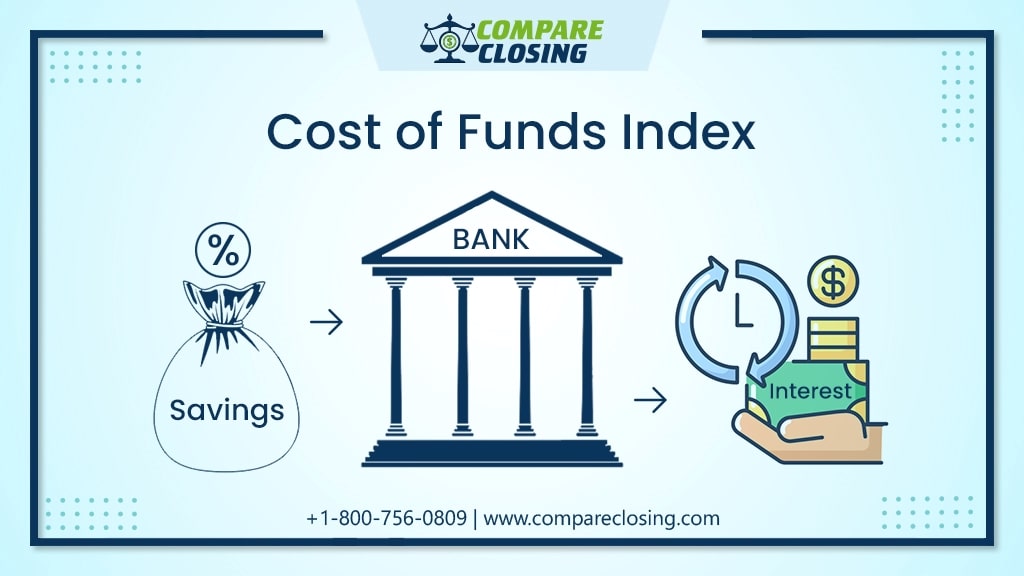Table of Contents
- What Are Netting Escrows & How Does It Work?: The Best Guide - January 2, 2024
- The Secret About Prescriptive Easement: Top Guide 1 Must Know - December 4, 2023
- About Home Equity Loans In Texas And How Can One Obtain It - November 27, 2023
About Cost of Funds Index (COFI)
When you apply for a mortgage, the lenders charge an interest rate to the borrower for providing you with the loan. This interest rate often keeps on changing depending on the market index.
However, the lenders need to have such funds to lend and they borrow these funds from Federal Reserve where the lender needs to pay some interest to the Federal Reserve.
In this post, we will understand the cost of funds index and how it works in detail.
What Is The Cost Of Funds Index (COFI)?
The cost of fund index is one of the indices used by lenders and banks so that they can calculate the rates when they change after a period.
The banks will use the COFI index to calculate the interest to be paid to those account holders who have a savings account with the bank.
When a mortgage lender uses a COFI index, the lender uses the cost of funds index as the basis for the interest rate that the borrower will pay on an ARM loan each time the rate adjusts.
How Is The Cost Of Fund Index Derived?
The COFI index is derived from the interest costs that financial institutions, mortgage lenders, and banks report. Some specific banks and lenders report the interest rate each lender pays including those in some specific states like Nevada, Arizona, and California.
In addition, the savings lenders that are members of the federal home loan bank of San Francisco also report interest costs to calculate the COFI every month.
The cost of money index changes is based on various parameters.
Some of the parameters that are included in the calculation of the cost of money index include index interest rates, the sources that the reporting members have for obtaining money, acquisitions, and mergers, and the accounting guidelines for the institutions.
Usually, the cost of funds index stays in sync with other indices such as the US Treasury Bill or the Prime LIBOR. Since the cost of money index is the foundation or basis of the interest rates set by these various institutions, a margin is added to the index to determine the final lending interest rate.
For example, if the COFI is 2.875% and the margin is 2.6% then the interest rate that the bank pays on a savings account or a charge on a loan is 5.475%.
When an account is opened where the interest rate is earned or paid, the way an interest rate is calculated is an important factor.
The index is one of the most significant parameters to establish adjustable-rate mortgages. Most account holders can determine their rates by using the COFI and adding the margin that the lender tax is on.
The COFI is based on the Federal Funds Rate. The federal funds rate is the rate at that banks lend their excess reserves to other banks overnight. By law, commercial banks are supposed to keep a reserve amount equal to a certain percentage of their deposits at the Federal Reserve.
The Federal Open Market Committee meets eight times a year to decide whether or not the federal funds rate should go up, down, or remain the same. They take in economic factors like inflation, possible recessions, and durable goods orders.
The lender will have a set margin on the federal funds rate when any borrower is applying for any loans like a mortgage, car loan, or any other loan. This margin is the profit that a lender makes from the loan over the tenure of the loan.
Conclusion
The COFI plays a very important role in the secondary lending market. Many factors derive from the calculation of the cost of money index.
For a regular borrower, it may not be important to understand this; however, it passively affects the borrowing rate for the borrowers when they apply for any loan or mortgage.
If the COFI rate moves up the borrower will end up paying higher interest rates on the borrowed amount, however, if it dips, the borrower may benefit from lower interest rates on borrowed money.
Amanda Byford
Amanda Byford has bought and sold many houses in the past fifteen years and is actively managing an income property portfolio consisting of multi-family properties. During the buying and selling of these properties, she has gone through several different mortgage loan transactions. This experience and knowledge have helped her develop an avenue to guide consumers to their best available option by comparing lenders through the Compare Closing business.





